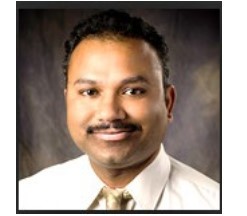
Title: Impact of simultaneous exposure to an environmental carcinogen and pollutant on skin.
Keynote
Dr. Ravi P. Sahu
Department of Pharmacology and Toxicology, Boonshoft School of Medicine Wright State
University
Dayton,
Abstract
Abstract: Human skin is constantly exposed to environmental insults, namely solar UV radiation (SSL) and pollutants such as benzo[a]pyrene (BaP). Due to the prevalence of these hazards in daily life, it is important to understand the effects of BaP, SSL, and ultraviolet B (UVB) exposure on skin tissue, and the mechanisms by which BaP and UVB/SSL mediate their effects, in order to design relevant strategies to mitigate their effects. Epidemiological studies indicate that increased exposure to these environmental hazards simultaneously can increase the risk of contracting human malignancies such as skin, mucosal, and lung cancers. Our previous studies demonstrated that exposure to UVB radiation induces the generation of microvesicle particles (MVPs) from human and murine skin in a dose-dependent manner. Notably, our studies have also discovered that these MVPs carry a potent phospholipid mediator, Platelet-activating factor (PAF) agonists. Importantly, these PAF agonists play crucial roles in mediating the effects of pro oxidative stressors, including UVB and therapeutic agents such as systemic immunosuppression and cancer growth in experimental models. To that end, our current studies sought to determine the effects of topical exposures to BaP, UVB, and SSL on MVP release from murine skin. The data demonstrated that these environmental hazards induce increased MVP release in a dose-dependent manner. While studies to determine the combined effects of BaP+UVB and BaP+SSL as well as the involvement of the PAFR and MVP are ongoing, the current studies suggest that PAFR agonists-laden MVP release is one of the possible mechanisms in mediating these hazards-induced effects.
Biography
Dr. Sahu is an Associate Professor in the Department of Pharmacology and Toxicology at Wright State University, Dayton, OH. His research is focused on determining the significance and mechanisms of pro oxidative stressors-generated oxidized lipid mediators in impacting cancer growth and the efficacy of therapeutic agents. He has given invited talks to various national and international scientific organizations, published several peer-reviewed papers, and serves as an editorial board member, academic editor, and ad hoc reviewer of several scientific journals.
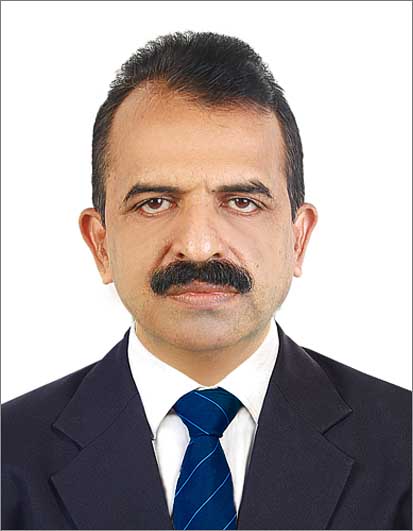
Title: Paracetamol is the most unscientific and dangerous drug for fever. Anyone can create a fever within hours using antipyretic objects.
Keynote Speaker
Yacob Mathai Kunnathazhath
Marma Health Centre, India
Abstract
Paracetamol is the most unscientific and dangerous drug for fever. Anyone can create a fever within hours using antipyretic objects.
K. M. Yacob. Marma Health Centre, kaloor, Kochi, Kerala, India. yacobkm@gmail.com
Keywords: Prostaglandin E2, Antipyretics, fever-inducing, fundamental errors, fever definition.
Most people mistake fever for high temperature and think it is dangerous and take paracetamol to reduce temperature as fever is determined by checking temperature.
A high temperature is not a fever, but hyperthermia, which is the opposite of fever.The only cause of fever is inflammation. But hyperthermia is high heat. We can create a fever within a few hours by antipyretics. It cannot cause hyperthermia. Hyperthermia can be created within seconds by using hot objects.
Hot objects of the same temperature as fever or heat-producing substances cannot cause fever in any living being. Antipyretics cause prolonged infection, which increases disease and death. Paracetamol is an antipyretic drug.
Decreased blood flow due to severe inflammation is the sole trigger for fever. Any substance that is cooling or reducing temperature (antipyretic) is a fever stimulant because it increases inflammation and reduces blood flow. Antipyretics are the only substances needed to induce fever in any organism. Antipyretic fever treatment never reduces inflammation but increases it.
A decrease in temperature is not enough to reduce the fever, all substances and their functions, which only increase and decrease during fever, must return to the state they were in when there was no fever.
Any warm or heat-increasing substance (pyretic) is a fever reducer because it reduces inflammation and increases blood flow. Pyretics are therefore the only substances necessary to cure fever in any organism.
Any warm or heat-increasing substance (pyretic) is a fever reducer because it reduces inflammation and increases blood flow. Pyretics are therefore the only substances necessary to cure fever in any organism.
There is a fundamental contrast between the basic action of fever and the basic action of paracetamol. The essence of today's fever treatment is fever can be cured by using fever-creating substances.
A feverish temperature works against lack of blood flow and it increases blood flow.
Paracetamol is given to reduce prostaglandin E2. It is not a fever-causing substance. It has hyperthermic and anti-inflammatory properties. It is more abundant after the inflammation in the body. From this, the immune system produces prostaglandin E2, which reduces inflammation and increases blood flow to the body or organ, making the body healthier and live longer
ProstaglandinE2 is found in the body during fever, similar to the airbag used to protect passengers in a car accident. Paracetamol is given to the patient to eliminate the prostaglandin E2 found in fever, just as those who do not know the purpose of an airbag in a car accident disable it thinking that someone will die in a serious accident because of the airbag. As a result, the body swells, blood flow decreases and the patient dies.
The medical book states that paracetamol may cause fever, neutropenia, thrombocytopenia, nephropathy, and skin reactions 1. This is not a side effect of paracetamol, but its proper function.
Paracetamol is given again to relieve the fever caused by taking paracetamol. If it is said that the medicine used to reduce the temperature of the fever itself causes the fever, the scientific and authenticity of that medicine are being questioned here. There is no science or technology like this anywhere in the world.
Researchers have found that even a single dose of paracetamol can reduce the levels of glutathione, a chemical in the body that reduces inflammation2. Yet paracetamol is classified as an anti-inflammatory.
Paracetamol destroys all the protective substances our immune system makes when we get sick. It decreases prostaglandinE2, Glutathione, interferon, platelets, WBC, etc,…
If the fever temperature is reduced by giving paracetamol, substances produced only during fever will increase. Paracetamol does not reduce fever, the cause of fever, morbidity, or mortality, all of which are increased by paracetamol.
Even for diseases that would have cured themselves due to the action of our immune system, using paracetamol can cause inflammation, reduced blood flow, and death.
Antipyretic therapy is a necessary and appropriate treatment for hyperthermia and not for fever. No one has scientifically proven that antipyretic therapy, which reduces the heat of a fever, is an appropriate treatment for fever and inflammation.
Depletion of ProstaglandinE2 and glutathione, which reduces inflammation, can also increase inflammation. These fundamental errors have led to the treatment of fever with antipyretic agents. No such treatment or science was found even in the Stone Age.
No other illness or symptom is more unscientific than justifying the administration of paracetamol for fever. There is no one percent evidence that paracetamol increases blood flow by reducing inflammation and helping the immune system in any way. At the same time, there is 100% evidence that paracetamol increases inflammation, reduces blood flow and destroys the immune system.
Prescribing paracetamol for fever is murderous as it depletes substances such as prostaglandin E2 and glutathione which increase blood flow and sustain life.
Conflicting opinions on the effectiveness of various antipyretic treatments can be found in various journals.
Biography
A practicing physician in the field of healthcare in the state of Kerala in India for the last 35 years and very much interested in basic research. My interest is spread across the fever, inflammation and back pain. I am a writer. I already printed and published Ten books on these subjects. I wrote hundreds of articles in various magazines. After scientific studies, we have developed 8000 affirmative cross checking questions. It can explain all queries related to fever. After scientific studies we have developed 8000 affirmative cross checking questions. It can explain all queries related with fever. My 10 articles published in various journals.
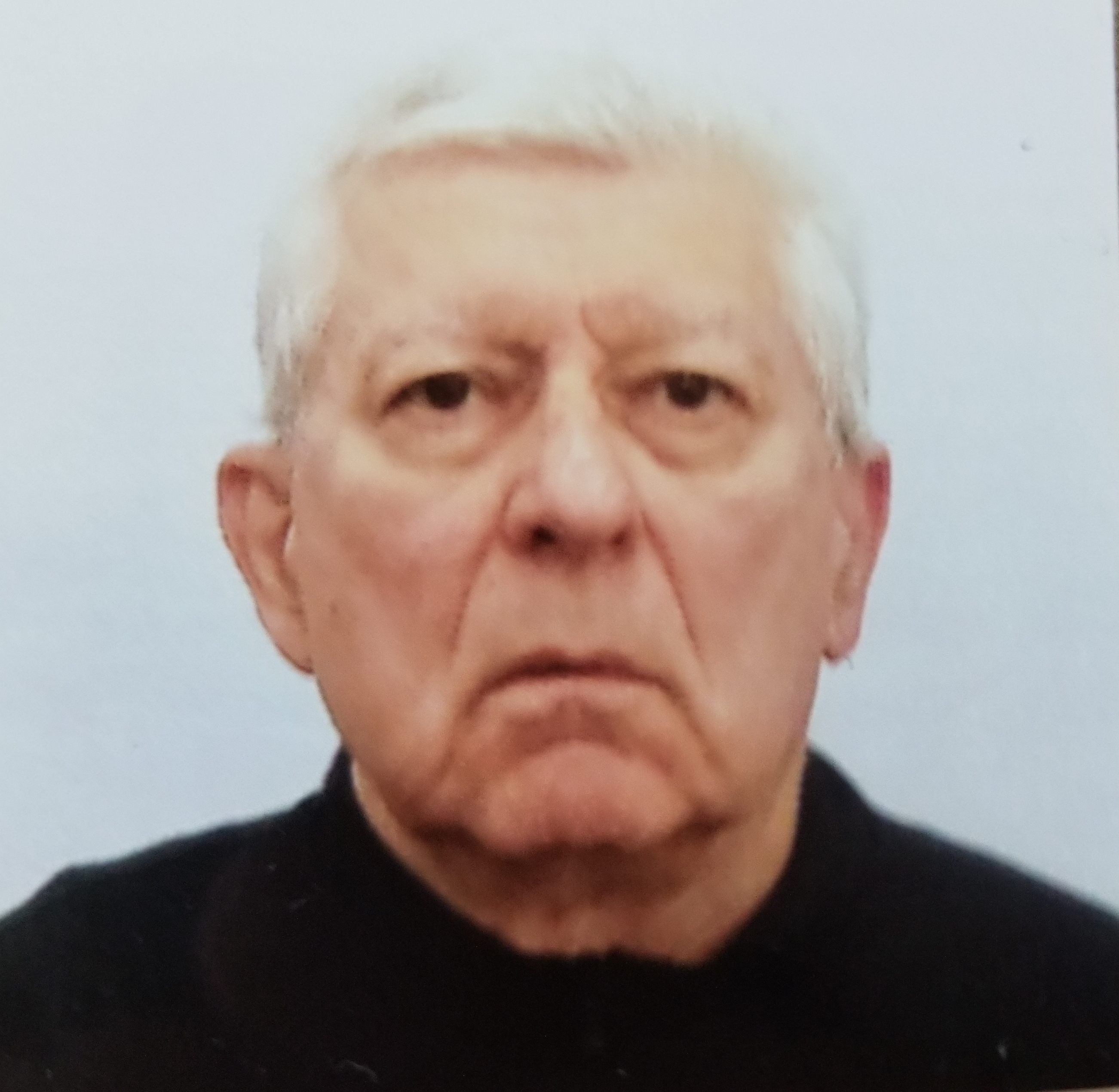
Title: NOVEL FORMULATION OF IV NITROGLYCERIN (GTN) FOR TOLERANCE-FREE CONTINUOUS DOSING
Keynote Speakeer
Dr. Wayne Kaesemeyer
Augusta Hypertension PC
USA
Abstract
This presentation highlights the past 50 years of research focusing solely on tolerance involving nitroglycerin (glyceryl trinitrate, GTN). It illustrates for the first time in 135 years, a mechanism whereby nitric oxide, the mediator of vasodilation by GTN, may also tolerance by the S-nitrosylation of mitochondrial complex I which results in superoxide production in response to glutathione depletion. Based on targeting superoxide from mitochondrial glutathione depletion, a novel unit dose parenteral GTN formulation in 5% glutathione for use as a continuous infusion is described. It is felt that this new formulation will permit tolerance-free continuous dosing of IV GTN without the need for a nitrate-free interval seen currently with the use of GTN.
Biography
Wayne Kaesemeyer MD, is an independent research cardiologist with a focus on vascular redox biology and preventing the activation of the NLRP3 inflammasome in the treatment of cardiovascular diseases. His work builds upon his research on the cause and prevention of nitroglycerin tolerance. Dr. Kaesemeyer has practiced as a hypertension specialist for 28 years and is board-certified in internal medicine. He has been the principal investigator in numerous clinical trials related to hypertension, lipids, and heart failure medications. His expertise extends to statin nitric oxide pleiotropy combined with inhibition of atp citrate lyase for use in targeting vascular inflammation to improving residual cardiovascular risk remaining after cholesterol lowering.
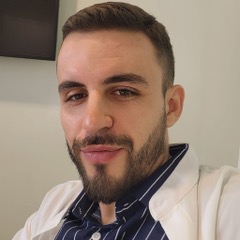
Title: Revolutionizing Healthcare: EHR and AGI Integration for Enhanced Patient Outcomes
Invited speaker
Douglas Amante
Singapore University of Technology and Design (SUTD), Singapore
Abstract
Title: Revolutionizing Healthcare: EHR and AGI Integration for Enhanced Patient Outcomes
Introduction
• Objective: To explore the transformative potential of integrating Electronic Health Records (EHR) with Artificial General Intelligence (AGI) to improve patient outcomes and drug effectiveness.
• Context: The healthcare industry is rapidly evolving, with technology playing a pivotal role in shaping future practices. The integration of EHR with AGI represents a frontier in medical innovation, offering unprecedented opportunities for enhancing healthcare delivery and decision-making.
Background
• Electronic Health Records (EHR): Overview of current EHR systems, their capabilities, and limitations. Discussion on the importance of comprehensive and accessible patient data in healthcare.
• Artificial General Intelligence (AGI): Introduction to AGI, distinguishing it from narrow AI. Overview of AGI's potential to perform complex, human-like reasoning across various domains, including healthcare.
Integration of EHR and AGI: Opportunities and Challenges
• Enhancing Patient Outcomes: How AGI can analyze vast amounts of EHR data to predict health trends, identify risk factors, and propose personalized treatment plans.
• Improving Drug Effectiveness: The role of AGI in analyzing patient data from EHRs to assess drug interactions, side effects, and effectiveness, leading to more informed prescribing practices.
• Challenges: Addressing data privacy and security concerns, the need for standardized data formats in EHRs, and the ethical considerations of AGI decision-making in healthcare.
Case Studies
• Successful Integrations: Examples of healthcare institutions that have begun integrating EHR with AI technologies, highlighting preliminary outcomes and lessons learned.
• AGI Pilot Programs: Overview of ongoing pilot programs exploring the integration of AGI with EHR, focusing on objectives, methodologies, and anticipated impacts. Future Directions
• Policy and Regulation: Discussion on the need for robust policy frameworks and regulations to support the ethical and secure integration of EHR and AGI.
• Technological Advancements: Exploration of future technological developments expected to enhance the integration process, including improvements in AGI capabilities and EHR interoperability.
• Stakeholder Engagement: The importance of involving healthcare professionals, patients, and policymakers in the integration process to ensure that technological advancements align with patient care objectives.
Conclusion
• Summary of Key Points: Recap of the potential benefits and challenges of integrating EHR with AGI, emphasizing the transformative impact on healthcare.
• Call to Action: Encouraging healthcare stakeholders to embrace the integration of EHR and AGI as a step towards more personalized, effective, and efficient healthcare delivery.
Biography
Douglas Amante is a global businessman and researcher believing that the future of health information technology will be the integration of electronic health record and artificial general intelligence for improved healthcare delivery, with the focus shifting from data to choices based on artificial general intelligence's role in health data analytics. Otherwise, it would be required to spend time reconciling innovation and patient rights with medical ethics

Title: Fluorous Crown Ether as a Fast Cell Permeating Agent for Direct Delivery
Invited speaker
Abir Goswami
RIKEN Center for Emergent Matter Science,
Japan
Abstract
Fast and direct permeation of drug molecules into cells without disrupting the cell membrane is crucial for effective biotherapeutics. However, the hydration barrier poses an obstacle, impeding their direct interaction with the membrane for efficient and rapid passage. Drawing from the intriguing discovery that fluorous compounds break the hydrogen-bonding network structures of water, we developed a functionalizazble fluorous crown ether (FCEP) as a fast cell-permeating agent. FCEP quickly delivers a variety of bioactive cargos directly into cancer cells without endocytic entrapment. In contrast, using fluorinated acyclic analogues (FACP) instead of FCEP temporarily traps such cargos within endocytic pathways. When the nonfluorinated cyclic analogue CEP was used, no cell internalization took place. FCEP, designed to be compact, polar, and highly water-soluble, despite its high fluorine density, facilitates the fusion of lipid vesicles when their hydration layers are disrupted. Raman spectroscopy revealed the emergence of dangling OH bonds upon the addition of FCEP in water. Conjugation of FCEP with anticancer drugs via a reductively cleavable disulfide bond demonstrated the general utility of fluorous crown FCEP as a carrier for biotherapeutics.
Biography
Dr. Abir Goswami, born in 1992 in West Bengal, India, completed his undergraduate studies at the University of Calcutta in 2012. He earned a master’s degree in chemistry from IIT Guwahati in 2014. He completed a Ph.D. in catalytic off-equilibrium molecular machines at the University of Siegen (Germany) under Prof. em. Dr. Michael Schmittel in 2020. Currently, he is working with Prof. Takuzo Aida at Riken, focusing on fluorinated macrocyclic molecules for drug delivery and PTFE adhesive materials, aiming to unravel the mysterious effect of fluorine in chemistry and biology.

Title: Formulation, Characterization and Evaluation: Micellar Loaded Complex of Cuminum Cyminum to Treat Causing Disease of Respiratory infection
Invited Speaker
Dr. Rudra Pratap Singh Rajput
Royal College of Pharmacy,
Raipur India
Abstract
Abstract
Background: Respiratory infection (RTI) is a viral spreading disease and it transmits from individual to individual, particularly in youngsters and aged peoples. The treatments are available but have so many limitations.
Objectives: To overcome these issues, novel drug delivery (nanoparticle) based micellar loaded complex approach was adopted using cuminaldehyde (Cuminum Cyminum L.).
Methods: In this study, the micellar (CM) was prepared by mixing of cuminaldehyde and soya lecithin using anti-solvent precipitation technique and further the micellar loaded complex (CMLC) was prepared by loading of micellar (CM) in aqueous solution of chitosan.
Results: The optimized CMLC and CM were irregular particle shapes and crystalline structures, with a mean particle size of 279.10±0.02 nm, 296.24±0.10 nm and zeta potential of -8.18 mV, -8.77 mV, respectively. The % entrapment efficiency and % drug loading of CMLC (72.13±0.26 %, 06.46±0.01 %) and CM (89.09±0.20%, 08.05±0.19 %) was found efficiently. The in vitro release rate of CM (88.09±0.41 %) was slower than CMLC (89.02±0.06 %) in pH 7.4 phosphate buffer up to 24 h by diffusion process (Korsmeyer Peppas model).
Conclusion: Furthermore, CMLC has shown the potent in vitro antioxidant activity, susceptible antibacterial activity and significant anti-inflammatory activity as compared to CM against stress, microbial infection (S. aureus and E. coli) and inflammation which were causable reason for the respiratory infections. CLMC has shown the significant bioavailability and more efficient hematological parameters value on rabbit blood against the incubation of bacterial organism. CLMC may have the effective potential to treat causing disease of COVID 19 i.e. RTI.
Keywords: Respiratory infection (RTI), cuminaldehyde, Micellar, Evaluation Parameters.
Biography
Dr. Rudra Pratap Singh Rajput has completed his B.Pharm form CSVTU, Bhilai (Chhattisgarh) in 2012 then moved towards Maharashtra State to complete his M.Pharm in 2014 from Pune University, Pune. Further the Doctoral degree Ph.D was awarded by JSSAHER, Mysuru (Karnataka) in 2018. He has started his academic carrier as Assistant Professor from Jeypore College of Pharmacy, Odisha in Aug, 2018 and continued in Columbia institute of Pharmacy, Raipur (Chhattisgarh) since 29th April, 2019 to 17th Feb, 2023. Further He switched to Royal College of Pharmacy, Raipur (Chhattisgarh) on 18th Feb, 2023 and continuing till date. He has supervised 15 degree and 10 post graduation students to accomplish project dissertation work. At present 4 research scholars are pursuing their PhD under his supervision. He has more than 33 publication in SCI(E) indexed reputed journals. He also received an international travel grant from ICMR, New Delhi to present his work on international platform. He has more than 300 actively participatation in various national and international conferences. Also, he has organized two government bodies sponsored DBT, New Delhi and AERB, Mumbai national conferences for the students, researchers and academicians.

Title: Autism and General Anaesthesia for Dental Care
Keynote
Dr. Maria Dalamagka
Department of Anaesthesia , General Hospital of Larisa
Greece
Abstract
Abstract
Autism is the fastest growing serious developmental disability. Infantile autism is associated with a characteristic cognitive, language and behavioral features. Autism spectrum disorders (ASD) have lifelong effects on areas of individual daily life functioning such as learning, relationships and independence. The future of anesthetic management of ASD will depend on how well we understand the etiology, psycho-social and medical issues with the disease. A wide spectrum of medical and behavioral symptoms is exhibited by children with autism, which makes routine dental care very difficult in them. Autism is a neurobehavioral and cognitive disorder characterized by impaired development of interpersonal and communication skills, limited interests, and repetitive behaviors. American Academy of Paediatric Dentistry's guidelines on Caries Risk Assessment has categorized them under High risk for physicians and other nondental health care providers and Moderate risk for dental providers. Attitude and knowledge of the oral health care professionals are of utmost importance while rendering oral health care to such children. The treatment rendered currently provides a long-term benefit for the patient. More focus had to be given for the long-term maintenance of oral health in special children. A 24-year-old autistic child with a history of seizures came to the operating room where he received general anesthesia for dental work. The awakening was particularly slow, as the patient's condition was characterized as severe autism with the corresponding medication, which interacts with the anesthetic drugs and makes awakening difficult.
Keywords: autism; anaesthesia; dental; surgery; epilepsy
Introduction
The prevalence of Autistic spectrum disorders (ASD) is estimated to be 1% worldwide. The majority of studies that examined sex differences in people with ASD found an increased risk in males, which is consistent with higher male prevalence for ASD in the general population. These results support the strong connection between intellectual disability, epilepsy, and ASD. The signature characteristics of autism are atypical development of behavioral and social skills, and the inability to communicate. Symptoms of autism include, but are not limited to poor social relationships, underdeveloped communication skills, repetitive behaviors, unusual interests and activities, variable degree of intellectual disability, avoiding eye contact, avoiding social contact (preference toward being alone), not understanding other people's feelings and needs, physical aggressiveness, self destructive behavior, and tantrums when provoked. The different types of treatments available are generally broken down into the categories of behavior and communication approach. Medications approved by the FDA to treat aspects of ASD are the antipsychotics risperidone (risperidal) and aripripazole (abilify). Risperidone is a novel atypical neuroleptic with favorable profile of side effects due to its unique pharmacological activity: it exhibits both potent dopamine and receptor blocking activity, as well as high affinity for alpha 1 and alpha 2 adrenergic receptors and histamine 5- HT3 receptor. These medications can help reduce irritability (aggression) and self harming acts [1-6].
Case Report
A 24-year-old patient with a body weight of 70 kg, with autism and a history of seizures under treatment with Depakine 500 mg (therapeutic levels), Risperdal 4 mg, Seroquel 200 mg, Akineton 2 mg and Concor 5 mg was admitted to anesthesia for dental work. Patient was given intravenously: 2mg Dormicum, 0.1mg Fentanyl, 200 mg Propofol slowly intravenously and 100 mg Esmeron. After nasotracheal intubation with a 6.5 spiral tube, the patient was placed on mechanical ventilation with 50% oxygen and 50% air and sevoflurane 2.5% to maintain anesthesia. The ventilation model was volume control on Drager ventilators and positive end-expiratory pressure 4. The duration of anesthesia was 3 hours. After the end of the dental work, the patient was on 100% oxygen and the awakening was delayed to 40 minutes by administration of 500 mg Bridion and Anexate 0.5 mg. The patient maintained spontaneous breathing several minutes before extubation. In resuscitation he was drowsy for half an hour and then he started to communicate.
Management and outcomes
Anesthesia comes with significant adverse reactions such as: complete regression into autism, great difficulty coming out of the anesthesia, exceeding a normal time frame for “recovery”, developmental regressions. Risk factors for adverse reactions from anesthesia are: history of seizures, autism or other neurodevelopmental disorder such as ADD/ADHD, learning disabilities or Sensory Processing Disorder, preoperative respiratory problems, poor clinical condition of the patient prior to the procedure, undiagnosed or diagnosed mitochondrial dysfunction (disorder of energy production) such as mitochondrial oxidative phosphorylation (OXPHOS), MTHFR genetic defect. Many children with autism have a vitamin B12 deficiency, and nitrous oxide depletes levels of B12.
Discussion
Autistic children are considered difficult patients due to increased anxiety of patient and family members, uncooperative or combativebehavior, or in extreme cases very violent behavior of patients. It is critical for the anesthesiologist to recognize these difficult cases and prepare for the necessary interventions beforehand. Following identification, there must be appropriate pre-anesthetic consultation and careful planning, which should include discussion with parents of the anesthetic plan and options.
Conclusions
Children with autism have multiple medical and behavioral problems, which make their dental treatment extremely difficult. Communication problems and poor mental capabilities are central concerns when treating children with autism; these children exhibit wide variations in their ability to cooperate during dental treatment. Children with autism who have mild to moderate mental retardation and an absence of severe behavioral problems can be treated successfully in the general practice setting. Nevertheless, behavioral problems like hyperactivity and quick frustration can hamper the provision of oral health care in patients with autism. Furthermore, the invasive nature of oral care may trigger violent and self-injurious behavior such as temper tantrums or headbanging.
Biography
Dr. Maria Dalamagka currently works at the Department of Anesthesia, General University Hospital of Larissa. Maria does research in acupuncture and Anaesthetics. She is PhD medicine , doctor of pain , MD. Editorial board member :Scifed Journal, Pain Medicine and Management, Enliven, Cient Periodique, Journal of Pain Management and Medicine _Longdom, Anesthesia &Pain Research _Scivision, GJNFS, Journal if Pain and Relief. Speaker and organizing committee to conferences as:Pain Research and Management Zurich 2018, 5th international conference Pain Research &Management London 2017, and Vancouver , Canada 2016, Word congress on Pain Medicine and Management Singapore 2019, International Conference on Alzheimers &Neurodegenerative desease Madrid , Spain 2018, scientific federation speaker
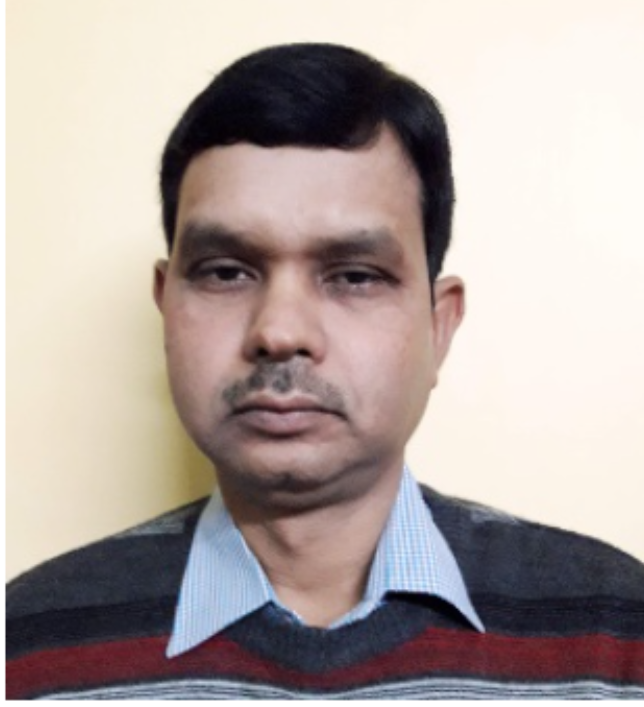
Title: Anti-Nipah virus activity of neoandrographolide from Andrographis paniculata by in silico methods
Keynote Speaker
Dr.Shyamapada Mandal
University of Gour Banga
India.
Abstract
Nipah virus (NiV) is an emerging infectious agent causing fatalinfection to humans, for which no specific treatment (or vaccine) is
available. Therefore, the targetable plant-based drug discovery isexpected to be a novel approach to tackle NiV disease. The inhibitory efficiency, against NiV targets, of bioactive small-molecules obtained from a well known medicinal plant Andrographis paniculata has not been adequately studied. In the current study NiV-G (nipah virus attachment glycoprotein) has been targeted for computer-assisted drug discovery using A. paniculata phytochemicals: andrograpanin, andrographidine E, andrographin, andrographolide, deoxyandrographolide and neoandrographolide (NGLD). Favipiravir and ribavirin were used as the reference drugs for comparison. NGLD displayed strongest affinity to NiV protein, NiV-G by molecular docking. The molecular dynamic simulations studies confirmed the energetically stable complex formation between NGLD and NiV-G protein. Favipiravir and ribavirin standards displayed lowest affinity to NiV-G. The phytochemicals used in the study had acceptable drug- likeness property and ADMET profiles. Taken together, the current findings suggest the potentiality of A. paniculata-derived bioactive compounds, mainly NGLD, as lead molecules for the discovery of anti-NiV therapeutics. Further, laboratory experiments are suggestive to authenticate the current in silico findings.
Biography
Dr. Shyamapada Mandal is Professor and Head of the Department of Zoology, and Dean(Science), University of Gour Banga, India. He is working on infectious diseases, probiotics, andgenomics and bioinformatics research. He did pre-PhD, PhD, and post-PhD research under theguidance of Professor Nishith Kumar Pal at the Calcutta School of Tropical Medicine, India. Hehas published 130 articles with eight book chapters. He is life member of IAMM and IASR,India, and fellow member of SASS, India. Eight national academic and research awards havebeen conferred to him. He has guided 58 post graduate students; supervised four MPhil and six PhD students, and supervising four PhD students. Professor Mandal is among the world’s top 2% scientists as per the survey of the Stanford University, published in PLOS (Public Library of Science) Biology (October, 2020). He is featured in the top 2% world scientists list for second, third and fourth consecutive times as published by the Stanford University-Elsevier BV (October, 2021, October, 2022 and October, 2023).

Title: 3D Printing in medicine: Technology overview and Drug Delivery applications
Invited Speaker
Ms Tisha Patel
The University of Adelaide
Australia
Abstract
3D Printing in medicine: Technology overview and Drug Delivery applications
ABSTRACT:
The advent of technology has had an emerging effect in the pharmaceutical industry. It plays a significant role in healthcare sectors. The 3D printing technology has brought about a shift from the traditional drug manufacturing practices to highly customisable drug formulations. The article differentiates the types of 3D printers based on the methods of the material layering for the pharmaceutical product development. It gives an insight on the recent pharmaceutical research for 3D printing. Moreover, it addresses to the challenges faced in the healthcare and pharmaceutical fields which might hinder the adoption of technology and proposes solutions to these issues.
Biography
Motivated second-year Bachelor of Biotechnology student with a strong academic background, having completed one year at the University of Technology Sydney (UTS) and currently enrolled at the University of Adelaide. Proficient in molecular biology and genetic engineering, I possess practical laboratory skills and a solid foundation in biotechnological principles. Committed to ethical considerations in science, I am eager to contribute to impactful research projects and collaborative initiatives. Seeking opportunities to apply my knowledge, enhance my skills, and make meaningful contributions to the evolving field of biotechnology. Current student looking to join the workforce to gain real-world experience. Ability to complete tasks on time in both individual and team settings. Dependable and reliable, ready to learn and grow with your organisation

Title: Analysis of COVID-19 Vaccinations and Symptom Mapping Diagnostic Technique for Viral Diseases: Using Data Analytics, Machine Learning and Artificial Intelligence
Invited speaker
Mr Chikezie Kennedy Kalu
Jiangsu University
Nigeria
Abstract
To analyse, understand and measure the COVID-19 vaccination outlook in a developing country as Nigeria; and the non-clinical analysis, diagnosis, treatment and management of COVID-19 and other viral diseases, using Data/Machine Learning(ML)/Artificial Intelligence (AI), Analytical tools and Methodologies. Using current and historical data from validated open source data stores, analysis was carried out on COVID-19 vaccination and related economic, demographic and geo-climatic data for a developing country, Nigeria and selected countries from all Continents of the World. The methodical and data-driven analyses were carried out using the following Data/Artificial Intelligence (AI) methodologies and algorithms: Excel Data Analytics, Multivariate Linear Regression Analysis method in Machine Learning (ML) Engineering, Symptom Mapping Analysis, Gray System Analysis. The COVID-19 vaccinations expectedly does reduce the number of active covid cases and the amount or number of vaccinations for a developing country as Nigeria is affected by a good number of economic, demographic and geo-climatic factors; and so COVID-19 vaccinations strategies must be unique to a Country and categories of Countries and take into account influencing factors not only limited to number of active covid cases. The strategies (including vaccinations roll-out) to eliminate COVID-19 can be better understood and managed for increased productivity and faster success rate in the fight against COVID-19. Medical practitioners can provide even more efficient diagnosis and treatment of viral diseases; and also patients can carry out personalised cost effective diagnosis and treatment/management of viral diseases, with also the advises of medical practitioners.
Biography
Chikezie Kennedy Kalu’s field of research is Technology and Innovation Management. He is from Nigeria and has a B.Eng. in Electronics Engineering from The University of Nigeria Nsukka; Nigeria (UNN) and a Masters (with Distinction) in Communication Engineering from The University of Manchester, UK. Chikezie has presented his works at a good number of international conferences and he was also awarded the International Best Researcher in Management Science and Engineering at the Asia Research Awards (International Congress for Research Excellence 2024) in India, in March 2024.
“ Will be updated soon...”
+91 9491 456 452
7-89-1-18, NVR LAYOUT, Madanapalle, Andhra Pradesh 517325, India
About Us
Global Scientific Guild organizes conferences and webinars to promote quality research and real world impact in an atmosphere of true international co-operation between scientists, doctors, professors, practitioners, engineers and industry by bringing together the world class renowned personalities to discuss the latest developments and innovations at one common platform.